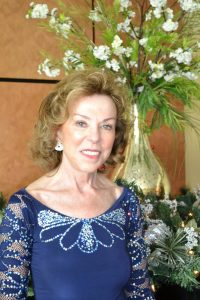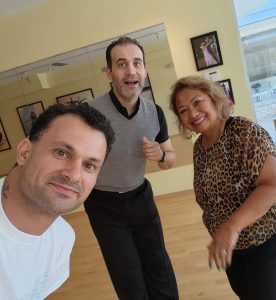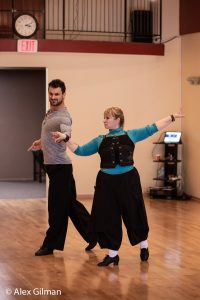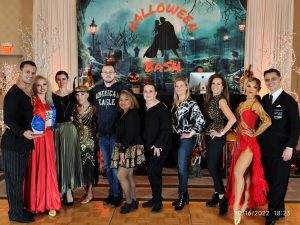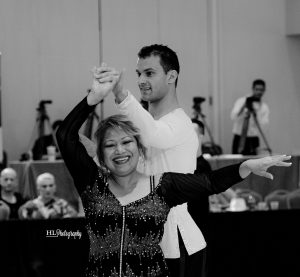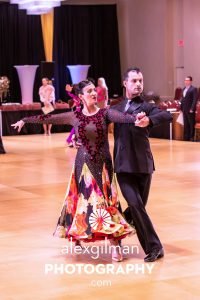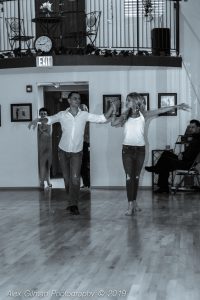This moment of time, when you realize that writing and especially in a foreign language is in fact extremely difficult, not to mention that you are about to do so, for someone so incredibly important, someone who have helped you shape your life for good…
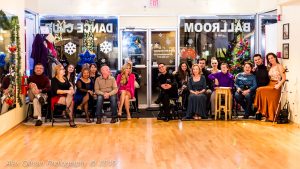
Dancing is a symbol of energetic life, invigorating passion, desire, deep feelings and sexuality. A dance symbolizes the stages and rhythms of life. Dancing is even more than we can possibly imagine… Dancing is life….
I will begin this dance story, by saying that I have met this person, about 9 years ago at the dance studio that I was working at that time – Arthur Murray.
At that time, the studio in Glenview, had the so called “Dance Students Party”, where every existing student, had to invite friends, so they can be introduced to the dance community.
I believe, that you can already guess, that my future friend and student, was one of the guests at that time. After seeing, that Arthur Murray had an ad for free / discounted dance lessons, she got invited by one of her best friends – Mrs. Doris W., who was already taking dance lessons for some time to join one of the dance parties.
After enjoying her first time in a dance studio and having a great conversation with her daughter, about how she used to love dancing, my dear friend was about to start her dance journey.
Her family, happened to be extremely loving and supportive, so they got her a few lessons to start with.
Realizing that the age of 72 is just a number and having a wonderful first lesson, my friend started getting a bit more involved into dancing and committing to dance packages, that would be bringing her journey to a different level.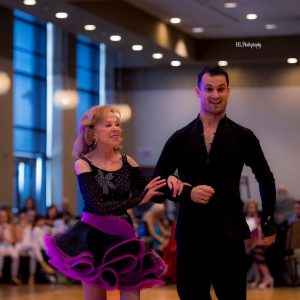
At the beginning, her very first dance teacher – Kelly, managed to do a great job, by helping her build a great understanding of coordination and balance, combined with lots of fun and joy, which is an important part of everyone’s dance journey.
Before I continue, telling you the dancing story of my friend, I would love to tell you couple words about her past:
Extremely accomplished in the sphere of physiology, she was RHR management physiology with issues affecting leadership effectiveness as well as working for Bankers Life (Vise president of Human resources)
For her, the consulting carrier and her family, where the most important thing.
Interestingly enough, every time she has attended a major event with dancing, weddings or any other occasion that would include dancing, she would be the first one on the dance floor!!!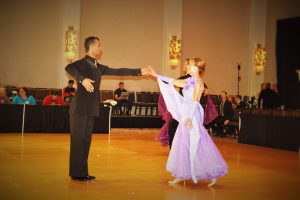
After sharing parts of her past, let’s go back to her dance journey and the moment she left Murray dance studio…
In the mid of 2013, I decided on leaving my workplace and creating a dance society in the North Shore area, which later was named “North Shore Dance Society”.
My friend decided on following me and we started practicing in her… leaving room (and yes, stop making excuses with the amount of space you have, just do it…).
Eventually, we started renting a floor space (paying floor fee) at a great place, located at the heart of Wilmette. Soon after, the very first dance event became a priority and everything after that is a wonderful history for both of us.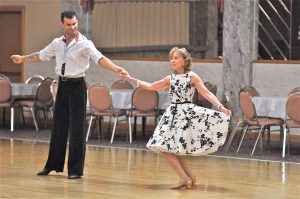
If you happened to ask her about the art of dance in her life… Expect to hear this:
“Other than family, nothing has had such an impact in my life. Quality in my life. Thinking of other ladies that say I wish that I can do it… Part of having the health is considering dancing as a gift of life. Source of joy, sense of fulfillment, frustration, cognitive as well as physical. Great sense when a dancer understands something and works well. Tremendous support of family and friends.
Lots of things that I didn’t expect – great physical activity and amazed by the things that I learned how to do… Lost weight and I am probably in the best shape of my life. Had to give away my old clothes.
Looked better every day and that made me very happy. Met some incredible people and made many wonderful friends through the dance community in Illinois. Very supportive community and a great friendship is what I have experienced.
Although, I have done many dance events, never felt competitive…
Balance, coordination & so much more to gain, thanks to dancing. Getting older is simply a reality for everyone.so I wanted to make sure that keep myself in shape.
Opening the dance studio in Glencoe was a fantastic idea. Feeling, like this is my second home, I have met absolutely great and very supportive people. Dancing is Celebration of my life and the most fulfilling part of it. If I had to choose one activity – dancing without question.
With tears in my eyes, hard to express how much I love dancing…
Understanding that my goal is the best dancer that I can be. Pushing myself every single time I practice or perform. The physiologist in me, understands that I can do it. Coordination between arms and feet is soooo hard… Having the opportunity to learn from a female and a male instructor is a blessing. Working with Olga is just part of the magic in dancing and the benefits of learning from her are countless.
Olga and Aleks, encouragement and a great constructive feedback is simply phenomenal.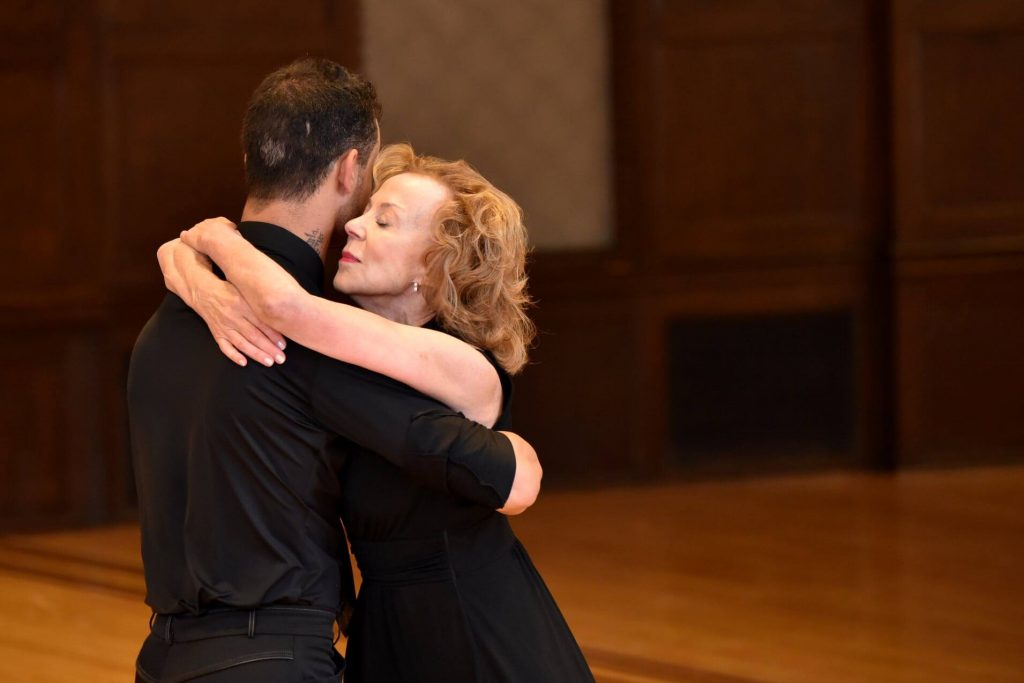
About dance events… Well, they have never been my main thing, but on the other hand, I love doing them and I can see plenty of benefits to participate them. I used to get very nervous before performing, but that’s no longer the case. With time, I have stopped being nervous, but always want to do well. I enjoy the fun of the events and the fact that we get to be together (being with our group)
Currently, I am dancing over 20 different styles, but my favorite is the “American smooth” – Waltz, tango, Foxtrot & Viennese Waltz. My biggest fear in dancing – forgetting the routine while performing (never happened).
My favorite dance routine was a Foxtrot on the song “You make me feel so young”!
If you ask me about my favorite dance event, well… they are so many, but I will stick with Extravaganza Showcase and Harvest Moon Ball, since I feel like home there. Another incredible event, that I would strongly recommend, would be the Wisconsin State Championship.
Why Aleks?! –well… fun has never been my main thing (you will understand once you work with him). I like the way he teaches. Consider him as an excellent teacher. Different way of teaching between levels and constructing everything like a Lego construction. Slowly build up and a clear focus before refining. Looking at what needs to be done.
Favorite Coach – hmmm, that’s a tough one… For me is hard to feel the difference, because they all contribute to my dance development. Bill Sparks, Peter Minkov, Olga Boneva and just some of the names that I would like to thank for the dancer I am today.
Little advice for all of my fellow dancers – Get more out of individual work. Make sure you practice every day.”
Anna Marie Buchmann